Introduction to Z-Wave Long Range (Z-Wave LR)
Z-Wave Long Range (Z-Wave LR) is a major enhancement to the traditional Z-Wave protocol, designed to extend coverage, improve battery life, and increase the number of devices that can be connected within a network. With Z-Wave LR, Shelly devices can now operate over much longer distances while maintaining the reliability and security that Z-Wave is known for.
Z-Wave Network Topology: Mesh vs. Long Range
Standard Z-Wave (Mesh)
-
Uses a mesh network where devices (nodes) relay messages to extend coverage.
-
Communication relies on multiple hops between devices.
-
It requires a minimum number of powered (repeater) devices for stability.
Z-Wave Long Range (LR)
-
Uses a star topology, where devices communicate directly with the controller.
-
Eliminates the need for intermediate repeaters.
-
Ideal for applications requiring long-distance communication without an extensive network.
Range Comparison
| Feature | Standard Z-Wave (Mesh) | Z-Wave Long Range (LR) |
|---|---|---|
| Range per device | 40–100 meters (indoors) | Up to 1,600 meters (1 mile) in open air |
| Hops required | Up to 4 hops | Direct communication to the controller |
| Total effective range | ~200 meters (ideal conditions) | No hop limit, extends as far as 1.6 km |
Device Capacity
| Feature | Standard Z-Wave (Mesh) | Z-Wave Long Range (LR) |
| Maximum nodes per network | 232 devices | 4,000 devices |
| Network congestion risk | High in large deployments | Ideal for large-scale applications |
Z-Wave LR is particularly advantageous for large-scale deployments, such as smart cities, large buildings, and industrial applications.
Power Efficiency and Battery Life
| Feature | Standard Z-Wave (Mesh) | Z-Wave Long Range (LR) |
| Battery Life | Typically 1-2 years | Up to 10 years |
| Energy Consumption | Higher due to frequent network communication | Lower due to direct controller communication |
Battery-powered Shelly Z-Wave LR devices benefit from significantly extended battery life, making them an excellent choice for smart sensors, locks, and remote devices.
Backward Compatibility
| Feature | Standard Z-Wave (Mesh) | Z-Wave Long Range (LR) |
| Compatibility with older Z-Wave devices | Fully compatible | Requires a Z-Wave LR-compatible controller |
| Coexistence in a hybrid network | Yes | Yes (but does not participate in mesh routing) |
A Z-Wave LR-compatible controller is required to take full advantage of long-range capabilities, but Z-Wave LR devices can still coexist with traditional Z-Wave mesh networks.
Use Cases: When to Choose Z-Wave LR vs. Mesh
| Use Case | Z-Wave (Mesh) | Z-Wave Long Range (LR) |
| Smart Homes | ✅ Best for dense networks | ✅ Best for extended coverage |
| Large Buildings | ✅ Mesh extends range | ✅ Eliminates need for repeaters |
| Outdoor Applications | ❌ Limited range | ✅ Long-range coverage |
| Smart Cities | ❌ Too many nodes | ✅ Supports up to 4,000 devices |
| Battery-Powered Devices | ⚠️ Limited lifespan | ✅ Up to 10 years |
Why Choose Shelly Z-Wave LR?
Shelly's Z-Wave LR devices bring the best of both worlds – the reliability of Z-Wave and the extended range and efficiency of LR. If you need a smart home solution that covers large areas, supports thousands of devices, and enhances battery life, Shelly Z-Wave LR is the way to go.
Final Thoughts
With Z-Wave LR, Shelly devices can now cover entire buildings, large properties, and outdoor spaces without the need for additional repeaters or complex network setups. Whether you are looking to automate a smart home, manage a large-scale IoT deployment, or simply improve device reliability, Shelly Z-Wave LR is the future of smart automation.

